Browse Houses
Search Results: Returned 5516 records. Displaying results 2101 – 2200
| House name | Description | |
|---|---|---|
| Drimna House | James F. Bland was leasing a house valued at £7 to Rev. Arthur Watson at the time of Griffith’s Valuation. In 1906 Col. Charles W. Warden owned a property at Drimnamore, valued at £3 10s. It is still extant. | |
| Drimrane | At the time of Griffith's Valuation John Taaffe was leasing a property at Drimraine, barony of Corran, valued at £6 to John Davis. It was in use as a herd's house accompanying a holding of over 100 acres. McTernan states that Davies subsequently sold the property to the Reynolds family in whose possession it still remains. | |
| Drinagh Mills | William Scott was leasing a house and flour mills from Hibernicus Scott in 1851 when the buildings were valued at over £40. It is not labelled as a mill on the 25-inch map of the 1890s. Farm buildings exist at the site now. | |
| Driney | In 1906 the mansion house at Driney was valued at £31. At the time of Griffith's Valuation it was occupied by Rev. Walter C. Peyton and was valued at £10. In 1814 it was the residence of Walter Peyton and was also recorded as the seat of the Peyton family in 1837. It was also recorded as a seat of the Peyton family by Taylor and Skinner in 1783. There is no evidence of a house at this site now. |
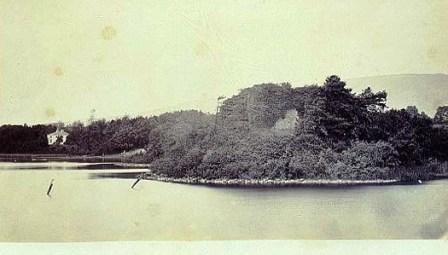
|
| Dripsey Castle | This house was the home of the descendants of John Colthurst and his wife Jane Bowen from the late 18th to the early 20th century. It is still extant though it was damaged by fire in June 1920. The Irish Tourist Association survey in the early 1940s recounts the boycotting of the family following the Sheehy-Skeffington murder in 1916 and their subsequent departure to live in England. In the early 1940s it was the property of John O'Shaughnessy who also owned Dripsey Woollen Mills. In 2014 it was offered for sale. |

|
| Dripsey Lodge | At the time of Griffith's Valuation this property was occupied by Alfred Greer, leasing from Sir William Magny. The house was valued at £26 while the adjacent paper mills had a valuation of £120. It is named as Dripsey House on the 25-inch Ordnance Survey map of the 1890s. The house is no longer extant. | |
| Drishane | Thomas Somerville held this property in fee at the time of Griffith's Valuation when it was valued at £35. Lewis also recorded it as the seat of Thomas Somerville in 1837. In 1906 it was owned by Aylmer Somerville and valued at £35. The Irish Tourist Association Survey described it as having been home to Coghills, Townsends and Somervilles. In 1945 it was the home of Dr. Edith Somerville, the well known author and illustrator. It is still extant. |
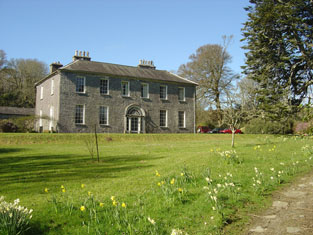
|
| Drishane Castle | Originally a MacCarthy castle, granted to the Hollow Sword Blade Company at the end of the 17th century, it was acquired by Henry Wallis from county Waterford in the early decades of the 18th century. William Wallis built the house near the castle soon afterwards and it remained in Wallis possession until the early 20th century. In 1894 Slater noted it as the seat of Aubrey J Wallace [Wallis]. The Sisters of the Infant Jesus, a French order of teaching nuns, occupied the house for most of the 20th century. In 1944 the Irish Tourist Association Survey outlined a history of the castle and the sale to the nuns. The castle is still extant. |

|
| Drom Hall & Sunday's Well | The Kenmare estate held a property valued at £9 in Dromhale townland at the time of Griffith’s Valuation. Bary states that this house was sometimes lived in by an estate agent. It is no longer extant. The nearby property of Sunday’s Well seems also to have been part of the Kenmare estate although at the time of Griffith’s Valuation it was being leased by Walter Murphy, MD to Joseph Fishbourne and was valued at £13. It is no longer extant and this area has been extensively built on. | |
| Dromadda | A house occupied by Warham Durdin in 1814 and by G. W. Courtenay in 1837. Caroline A. Courtney was resident in the early 1850s holding the property valued at £28 from John Courtenay. It is still extant though not in good repair. |

|
| Dromadeesirt Cottage | Catherine Thompson was leasing a property valued at £5 from the Earl of Kenmare’s estate at the time of Griffith’s valuation. Bary states that this family may have been agents for Lord Kenmare and that local tradition suggests Mr. Thompson was killed by being gored by his bull. The property was occupied until the late twentieth century and farm buildings are still extant at the site. | |
| Dromagh Castle | In 1815 Smith refers to Mr Philpot inhabiting Dromagh. A seat of the Leader family in the 19th century, Lewis writes that the castle was once the chief residence of the O'Keeffes. In 1906 buildings at Dromagh were valued at £27 and William N. Leader was the occupier. Donnelly states that it was burnt in March 1921 during the War of Independence. It is now a ruin. |
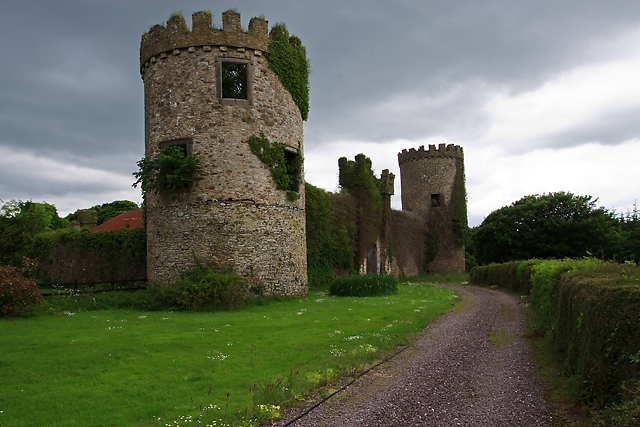
|
| Dromana | The seat of the Villiers-Stuart family, Lord Stuart de Decies, and held in fee by them in 1851 when it was valued at £101. In 1837 Lewis had noted that "its hanging gardens presents a picturesque and interesting feature". Charles Smith, referring to it as a noble seat of the Earl of Grandison, provides a detailed description of how it looked in the later eighteenth century. An account of its appearance in the 1940s is given in the Irish Tourist Association files. The National Inventory of Architectural Heritage indicates it is a seventeenth century house possibly incorporating parts of a medieval tower house. It was later extended and renovated but this Georgian extension was demolished in the 1960s leaving the original seventeenth century building. It is occasionally open to the public. |
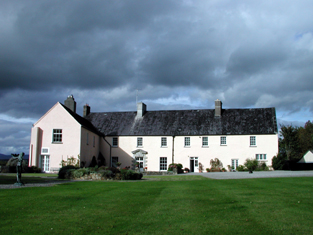
|
| Dromard | The home of the Lidwill family, occupied by George Lidwill in 1814 and by Fred Lidwill in 1837 and in the early 1850s. The house was valued at £11 and held from George Goold. In the early 1940s the Irish Tourist Association surveyor described Dromard as a "very pretty building, set amidst well kept grounds and pleasure gardens". The owner was Colonel Robert Lidwell. Dromard House, Templemore, on 253 acres was advertised for sale in ''The Farmers Journal'' (6 Nov 2004) and sold for over 4 million euro in 2006 see http://www.independent.ie/national-news/yesterdays-auction-results-73225.html | |
| Dromavane House | Leased by Thomas Wrenn from the Devonshire estate at the time of Griffith's Valuation, when it was valued at £9. It it still extant and occupied. |

|
| Dromaville (Inishowen) | James McSheaffrey held this property in fee at the time of Griffith’s Valuation, when it was valued at almost £12. It is labelled Drumaville House on the 25-inch and later Ordnance Survey maps. Buildings are still extant at the site. | |
| Drombeg | A house located on the estate of the Earl of Sandwich at the time of Griffith's Valuation and occupied by John Mulcahy, when it was valued at £11. [Grid reference is approximate]. | |
| Drombeg House | Drombeg was being leased by Catherine Jones from Lady Carbery's estate at the time of Griffith's Valuation, when it was valued at over £20. The sale notice of April 1852 includes a small lithograph of the house. In 1837 Lewis referred to Drombeg as the seat of Rev.Jonas Travers Jones. Leet refers to it in 1814 as the residence of John Baldwin. The house is still extant and occuped. See the Clonakilty Museum material at www.allaboutireland.ie |

|
| Drombofinny House | Benjamin Daunt was leasing this property from the Devonshire estate at the time of Griffith's Valuation, when it was valued at almost £8. It is labelled Drombofinny House on the 25-inch Ordnance Survey map of the 1890s. A house still exists at the site. | |
| Drombrow House | Occupied by Hamilton White, leasing from the Bantry estate, in 1852, when it was valued at almost £16. Lewis records "Drumbree Cottage" as the seat of J. White in 1837. Drombrow was the property of Arthur B. Wilkinson in 1906 and valued at almost £15. |

|
| Dromcarra House | In 1837 Lewis records J. Barter as resident at a house called Lee Mount in the parish of Inchigeelagh. The name Joseph M. Barter of Dromcarra House appears in the list of subscribers to Lewis. Thomas Barter held a house valued at £11.5 shillings in fee in Dromcarra North at the time of Griffith's Valuation. John Barter was resident at Droumcarra in the 1870s and John William Barter in 1906. A house still exists at the site. | |
| Dromdaleague House | At the time of Griffith's Valuation, Rev. Thomas Tuckey was leasing this property from George Bird, when it was valued at £12 5s. Lewis records it as the seat of Rev. T. Tuckey, rector, in 1837. | |
| Dromdihy | The building of this house was completed in 1833 for Roger Green Davis. He is recorded as the occupier in the early 1850s holding the house valued at £45 from Sir Arthur De Capell Brooke. The sale rental of 1863 gives a detailed description of this house - "Drumdiah House consists of a centre and two wings, ornamented with Doric columns and with a portico at the eastern end, by the hall is entered, and off which are hot, cold, vapour and shower baths. The first floor comprises five sitting-rooms; on the second floor are four best bedrooms, with dressing-rooms and water-closet......". In the 1940s the Irish Tourist Association Survey reported that the house had been "destroyed in the Troubles". It is now a ruin. |
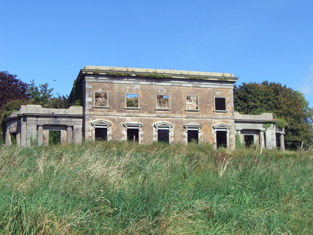
|
| Dromin | This house was the home of Nicholas Meade in 1837 and of his representatives in the early 1850s. It was located on the Devon estate and was valued at £13. It is still extant and occupied. |

|
| Dromin House | James Raymond was occupying this property at the time of Griffith's Valuation, when it was valued at £17 5s. In 1837 Lewis noted it as the seat of James Raymond while in 1814, Leet refers to it as the residence of James W. Raymond. In 1786 Wilson had also noted it as a seat of the Raymond family. In 1906 it was owned by the representatives of James Raymond and valued at £17. Bary states that this property was originally associated with the Fitzmaurice family, Lords Kerry, but that it passed to the Raymond family in whose possession it remained until the mid-twentieth century. It is still extant and occupied. | |
| Dromina House | At the time of Griffith's Valuation, in 1848, John Coghlan was leasing this property to Rev. Thomas Dixon, PP, when it was valued at £21. Lewis refers to it as the seat of T. Coghlan in 1837. Local sources suggest it was purchased by John Coghlan in the 1820s, having previously belonged to the Stevens family. It is still extant and occupied. In 2014 it was offered for sale. |

|
| Dromina Lodge | This property was held in fee by John Coghlan in 1848 when it was valued at almost £10. It is labelled "Dromina Lodge" on the 6-inch Ordnance Survey map but is not labelled on the 25-inch map of the 1890s. | |
| Drominagh Lodge | According to the sale rental of November 1853 Dr Frederick Biggs had built a handsome residence in Shanakill for a sum exceeding £1,000. Drominagh Lodge is marked on the first edition Ordnance Survey map. Griffith's Valuation records Frederick Biggs as the occupier of the house valued at £13. He held the property from Edward Biggs. This house has been the home of the Fogarty family since the late 19th century. |
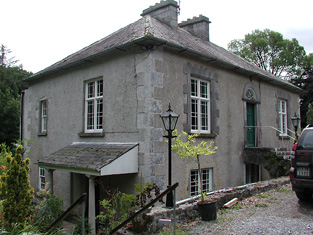
|
| Dromkeen | In the early 1850s John Hussey de Burgh lived in this house, situated near the old home of the Burgh family, also named Dromkeen. He held the property in fee. The buildings were valued at £19+. By 1906 Dromkeen was valued at £10. | |
| Dromkeen House | Fitzgerald refers to the old mansion of the Burghs as standing opposite the old walls of a church. Lewis refers to Dromkeen as "formerly the residence of the Burgh family" then occupied by the Reverend M. Lloyd, and that "the remains of the ancient mansion show it to have been an extensive and important establishment". A house at this site was occupied by Henry Croker at the time of Griffith's Valuation and valued at £34. It was held from Robert Smithwick. The Ordnance Survey Name Book refers to this house as William's Fort and states that it first belonged to the Burgh family and was rebuilt in 1820. Valued at £17 in 1906 and occupied by Digby H. De Burgh. |

|
| Dromkeen House (Inishannon) | This house was built after the publication of the 1st edition Ordnance map as it does not appear there. It is labelled Dromkeen House on the 25-inch edition of the 1890s. At the time of Griffith's Valuation it was leased from the representatives of John Sweeney by Christopher Dowden and was valued at £20. It is still extant. The Dowden family were business partners of the Allman family in their milling enterprises in Bandon during the mid-nineteenth century. | |
| Drommartin | Lewis refers to Dromartin as the residence of J. Creagh in 1837. At the time of Griffith's Valuation, John Creagh was leasing this property from Richard Oliver when it was valued at £4. No house exists at this location now. | |
| Dromneavane | Rev. John O'Sullivan was leasing a property valued at £8 5s from the Lansdowne estate at the time of Griffith's Valuation. Labelled Dromneavane on both the 1st-edition and 25-inch Ordnance Survey Maps. A house still exists at the site. | |
| Dromoland | This branch of the O'Briens have lived at Dromoland since the 17th century when they moved from Leamaneh Castle near Corofin to Dromoland. The present building was constructed in the 1830s to the design of James and George Richard Pain replacing an earlier house. In 1962 it was sold to Bernard McDonough, an American of Irish descent, who turned it into a top class hotel. The present Baron Inchiquin lives in Thomond House nearby. |
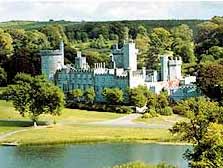
|
| Dromore | Occupied by Jonas Studdert, third son of Richard Studdert of Clonderalaw, in 1814. In 1795 Jonas married Mary Crowe of Dromore. The home of R. Crowe in 1837. Originally a hunting lodge Dromore became the main residence of the Crowes in the 1830s. The house was sold in 1936 and is now demolished. |
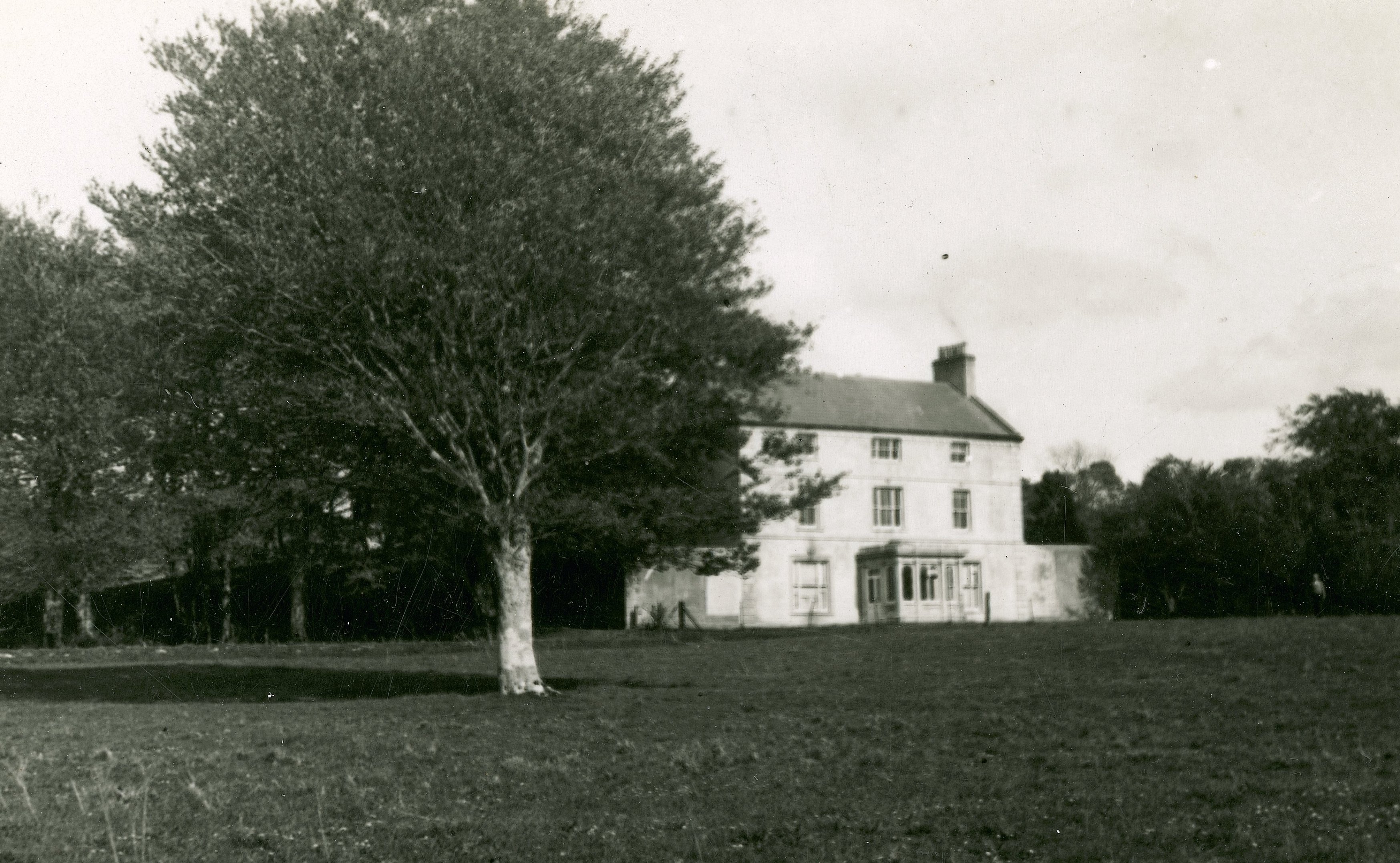
|
| Dromore | Mrs Rebecca Benn held this house valued at £17 in fee in the mid 19th century. The mansion house at Clonbunny was occupied by William B. Cronyn in 1906. The Benns and Cronyns were related. It was valued at £22. |
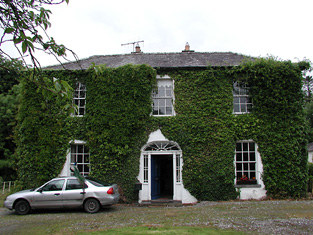
|
| Dromore | At the time of Griffith's Valuation the house at Dromore was the property of John Fenton and was valued at £15. Both Leet in 1814 and Lewis in 1837 also record it as a residence of the Fenton family. In 1864 Thomas Fenton offered it for sale in the Landed Estates Court. The house was occupied at the time by Jas. McMunn, MD. In 1906 the house at Dromore was valued at £16 and was the property of William Browne Loughead. |

|
| Dromore | A house located a short distance from Muckno or Castle Blayney lake. It was valued at £10 at the time of Griffith’s Valuation and held by Robert Bailey from Henry T. Hope. Members of the Bailey family were still resident in this townland in the early 20th century. A building is still located at this site. | |
| Dromore (Raphoe North) | At the time of Griffiths Valuation in the 1850s, Jane Stephenson was leasing this property from the Earl of Erne's estate when it was valued at £10. | |
| Dromore Castle | The reps of Rev. D. Mahony were occupying a property valued at £66, at the time of Griffith’s Valuation. Lewis mentions " a noble edifice in the Gothic castellated style" as the seat of Rev. Denis Mahony in 1837. In 1814, Leet noted Dromore as the seat of John Mahony. In 1906 it was owned by H.S. Mahony and valued at £66 15s. Bary states that it was built by Sir Thomas Deane for Rev. Denis Mahony in the 1830s. It remained in the Mahony family until the early years of the twentieth century. It then passed by marriage to the Hood family. The Irish Tourist Association survey in 1943 indicates it was the property of Colonel E. Hood whose wife was "the last of the O'Mahonys, a family associated with the area for over 300 years". It later pass from them to the Wallers, cousins of the Hoods. Dromore Castle is still extant and the National Inventory of Architectural Heritage states that it was renovated in 1998. |

|
| Dromore Castle | In 1868 the building of Dromore Castle began. It was an elaborate country retreat for the 3rd Earl of Limerick designed by Edward William Godwin. In 1906 this mansion house was valued at £75.10 shillings. The 4th Earl of Limerick did not visit Ireland very much and the castle was sold in 1939. In 1944 the Irish Tourist Association surveyor refers to the castle as the property of Mr M.McMahon, a timber merchant of Limerick, who bought the property in 1941 for a reputed £8,000. By the mid 20th century it had fallen into disrepair and the roof was taken off. Plans to develop the site and to demolish the ruin are current issues discusssed in the local and national press. |
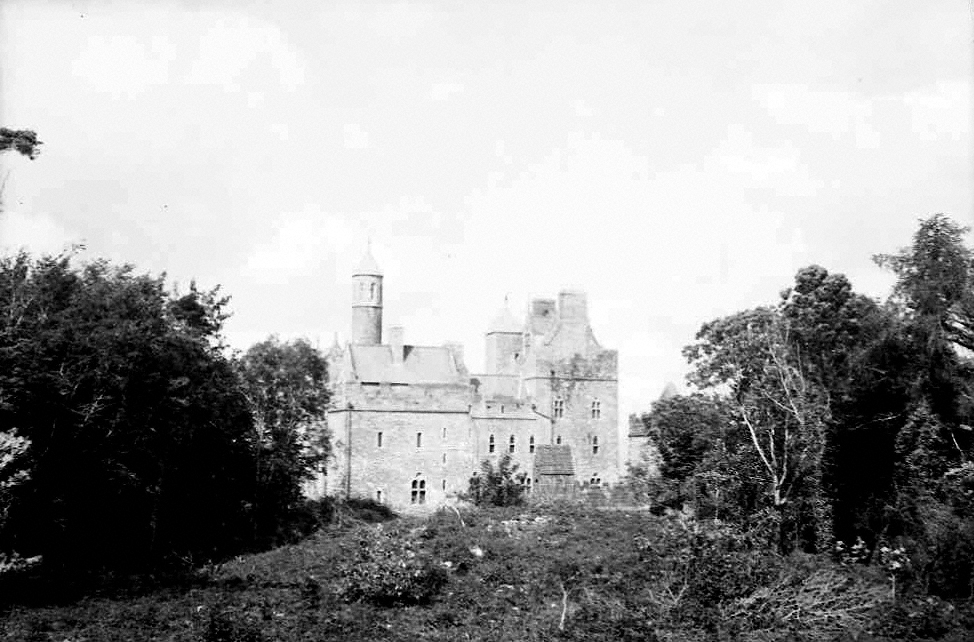
|
| Dromore Cottage | Daniel Welply held this property in fee at the time of Griffith's Valuation, when it was valued at £5. It is labelled Dromore Cottage on the 25-inch Ordnance map of the 1890s. It is still extant and occupied. |

|
| Dromore House | Dromore House is named on the 1st edition 6 inch Ordnance Survey map (1836) with a circular drive to the front and a walled garden to the rear. It was the home of C. Hawkshaw in the 1830s. Located on the Hatchell estate it was occupied by James Wade at the time of Griffith’s Valuation and valued at £14. The home of the Smyth family in the early 20th century, this house is no longer in existence. | |
| Dromore Lodge | A house situated on the Cremorne estate, close to Dawson’s Grove and almost on the border with county Cavan. The house is named on the 1st edition 6 inch Ordnance Survey Map (1836). It was occupied in the 1830s by Lieutenant Dawson of the Royal Navy. The building was reduced in size by the time of Griffith’s Valuation when it was rated at £6.10.0. John West Finlay was resident. By the early 20th century it has become the home of the gamekeeper on the Dartrey estate. A building is still located at this site. | |
| Dromrahan | A mansion house valued at £20 is recorded at Dromrahan in 1906. Matthew H. Franks was the occupier. This house was built in the second half of the 19th century and is not recorded in Griffith's Valuation. A large complex of buildings at the site is labelled Dromrahan House on the 25-inch Ordnance Survey map of the 1890s. It is still extant and occupied. |
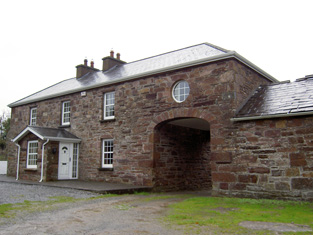
|
| Drum Lodge | One of the many surviving gatelodges on the Rockingham Demesne. |

|
| Drumahaire Lodge | Dromahaire Lodge was part of the Lane-Fox estate and was usually the home of the agent. During the 19th century these included D. Stewart and Joshua Kell. To the rear site are the ruins of a seventeenth-century fortified house, built by Sir William Villiers and formerly the seat of the O'Rourke family. |

|
| Drumalagagh Cottage | At the time of Griffith's Valuation, George Harrison was leasing a property at Drumalagagh, barony of Moycarn, valued at £14, from Lieutenant Colonel Maberly. This seems to be the property known as Drumalagagh Cottage. This was earlier associated with the St. George family. In 1837 Lewis records Dromalga Cottage as owned by Sir R. St. George but the seat of Mr. Dexter. The Ordnance Survey Name books of the same year describe the property as "a gentleman's place in good repair". It appears to have been situated on the demesne known as Mount Equity, of about 770 acres. Buildings labelled "Mount Equity" appear on the 1st edition OS Map but not on subsequent editions. In the Encumbered Estates sale notice of 1852 Dromalgagh Cottage is described as unoccupied but formerly the residence of the late Mrs. Dexter. In 2009, this property was offered for sale. An eighteenth century mausoleum, dedicated to Henry St. George, is also located in this townland. |

|
| Drumard | The Ordnance Survey Field Name Book states that a house in Burdautien was the residence of Cockran, agent to the Madden estate. The National Inventory of Architectural Heritage dates the house circa 1810. Griffith’s Valuation records William Cochran as the occupier holding the property in fee. It was valued at £30. In the 1860s Drumard appears to be leased by William Cochran to a family named Elliott. Michael Elliott died at Drumard in 1872. The house is still a residence. |
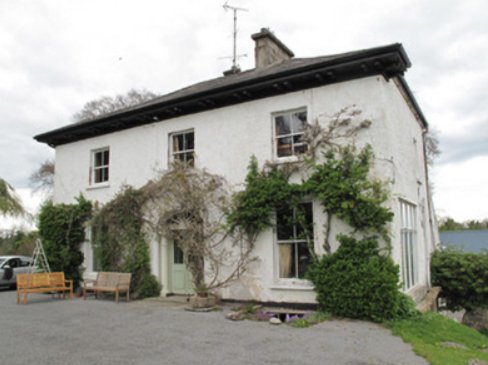
|
| Drumard House | Rev. Thomas Jones was leasing a property at Drumard, barony of Mohill, valued at £25 to William Jones at the time of Griffith's Valuation. It is no longer extant. | |
| Drumaweer | At the time of Griffith’s Valuation, in the 1860s, Samuel Crawford was leasing his property from the Cary estate, when it was valued at £14. The National Inventory of Architectural Heritage suggests that it was built in the earlier part of the 19th century but altered around 1900. It is still extant and occupied. | |
| Drumbarnet | Samuel Chambers was leasing this property from the Earl of Wicklow's estate at the time of Griffith's Valuation in the 1850s when it was valued at £18. In 1906 it had the same valuation and was owned by William Glenn. It is still extant. The National Inventory of Architectural Heritages suggests that it was extensively altered around 1911 with an extension added to the front at that time. |
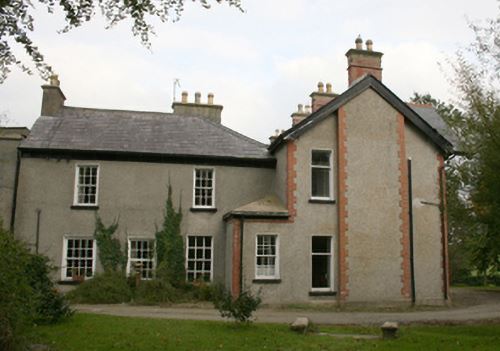
|
| Drumbeg House (Inver) | A house named Drumbeg or Cloverhill is shown in the townland of the same name on the 25-inch Ordnance Survey map. At the time of Griffith’s Valuation in the 1850s, it leased by William Sinclair from the Conyngham estate and valued at £21 15s. Drumbeg House is still extant. |
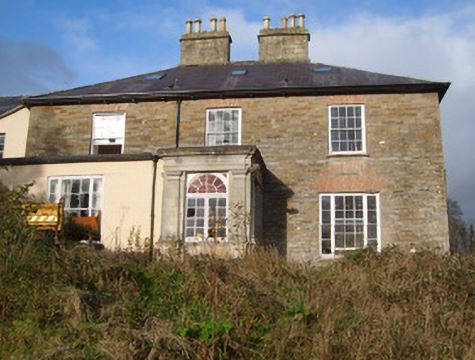
|
| Drumboe Castle | A castle and manor existed at Drumboe since the early seventeenth century. At the time of Griffiths Valuation in the 1850s, Drumboe was the seat of Sir Edmund Hayes, when it was valued at £60. It remained in the ownership of the Hayes family until the early twentieth century. In 1906 it was the property of Sir E.F. Hayes and valued at £33. It and the demesne were acquired by the Forestry service in the 1940s. The ruins of the estate buildings are still visible in the extensive woodlands and amenity areas at the site. |
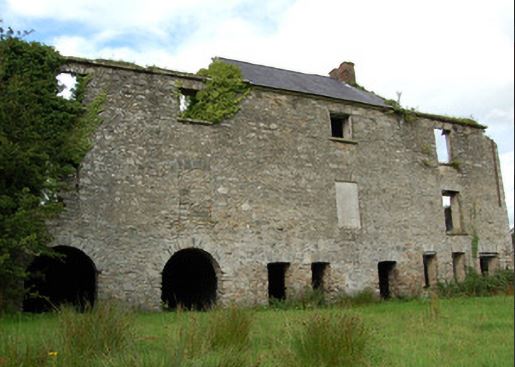
|
| Drumboory | Located close to a small lough a house valued at £10 was occupied by John Kenny and held from William Brownlow in the mid-19th century. A Kenny family was still located in this townland in the early 20th century. | |
| Drumbrean | This house no longer exists. Lewis records it as the property of T. Phillips and Griffith’s Valuation records Thomas Wright as the occupier, holding from Thomas Phillips. Phillips held the property on a lease renewable for ever from Andre Murray Ker (OS Field Name Book). Thomas Phillips married Mary Martha Emma Whitcombe. | |
| Drumbrean Cottage | A late 18th century building, still in use as a residence. Possibly used as a manse house in the mid-19th century when it was the occupied by the Reverend Richard Ross, who held it from the Murray Ker family. |

|
| Drumcarban | Bence Jones describes Drumcarban as a late 18th century house of 3 storeys and 3 bays. It was the home of the Bell Booth family in the 19th century. George Thomas Bell Booth was resident in the 1830s and 1840s until he was murdered in 1845. Robert Booth Bell was the owner and occupant at the time of Griffith’s Valuation. This house was occupied by Annie Sheridan in 1901, in 1906 by Michael Sheridan when it had a rateable valuation of £22.5.0. and is still extant. | |
| Drumcliff | The townland of Drumcliff South formed part of the Gethin estate in this area in the eighteenth century. This house was leased to Charles Allen at the time of Griffith's Valuation, when it was valued at £12 10s. The house had a succession of owners in the twentieth century and is still extant and occupied. | |
| Drumcree Mill | Josias Rowley was leasing a mill and house valued at £13 in this townland to Alexander Acheson in the 1850s. | |
| Drumcrew House | Drumcrew House located near a small lake of the same name and close to the town of Castleblayney. Valued at £10 at the time of Griffith’s Valuation, occupied by Henry Hunter and held from Henry T. Hope. Buildings are still located at this site. | |
| Drumcru | A building was located at this site on the Barrett-Lennard estate at the time of the 1st edition Ordnance Survey map (1836). Griffith’s Valuation records the house valued at £11 and occupied by Mary Renwick. A house surrounded by a complex of outbuildings is still located at this site. | |
| Drumdaff | Charles Croghan, a farmer, lived at Drumduff in 1749. Home of the Digby family in the 19th century. Held in fee by George Digby at the time of Griffith's Valuation when the buildings were valued at £17.It is still extant and maintained. |

|
| Drumdartan Glebe | At the time of Griffith's Valuation, Daniel Etough was occupying the house at Drumdartan Glebe valued at £16. In 1837 Lewis had recorded it as a residence of the Percy family. The property is now derelict. | |
| Drumdoe | At the time of Griffith's Valuation, John Wolfe Flanagan was leasing a house at Drumdoe from Viscount Lorton's estate, valued at £28. This house is described as "a good house, formerly the residence of Colonel Lilly" at the time of the first Ordnance Survey. A larger house was constructed some time after this and appears on the 25-inch map of the 1890s. This latter house is still extant. | |
| Drumellihy | A house on the Westby estate occupied by J. O'Brien in 1837 and by Michael Studdert at the time of Griffith's Valuation, when the house was valued at £20. It has remained in Studdert possession for over a hundred years. The date 1811 is inscribed on a stone at the gateway of this house. |
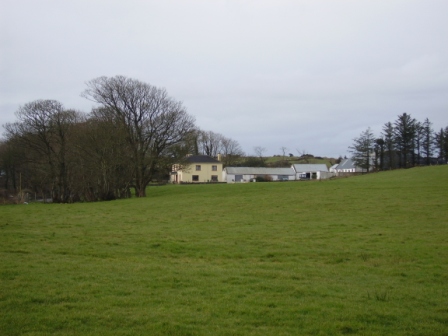
|
| Drumeltan House | Drumeltan is named on the first edition six inch Ordnance Survey map (publ. 1837) when it had a walled garden. It was situated on the estate of the Bishop of Kilmore and was held by Isabella Cooney in the 1850s when the buildings had a rateable valuation of £9.10.0. It passed from the Cooneys to the Adams family. In 1884 Drumelton House was rebuilt by William Adams (1837-1908) to the design of James Franklin Fuller. William’s mother was a Cooney. In 1906, it had a rateable valuation of £30. It remains the home of the Adams family well into the 20th century. See http://landedfamilies.blogspot.ie/2013/04/31-adams-of-drumelton-house-and.html for image and family history. | |
| Drumenan | James Alexander was leasing this property from the Abercorn estate at the time of Griffiths Valuation in the 1850s, when it was valued at £12. A house and farm are still extant at the site. | |
| Drumfaldra House | Drumfaldra was the residence John Jackson Cunningham ‘situated on a hill’ in SE of the townland (OS Field Name Book) and is believed to have been built by him (The National Inventory of Architectural Heritage), possibly on the site of an earlier Jackson house. It was associated with a milling enterprise in this townland. By the time of Griffith’s Valuation the house was occupied by George Browne and held from Robert Murdock. A Samuel Brown lived at Drumfaldra until his death in 1911. |
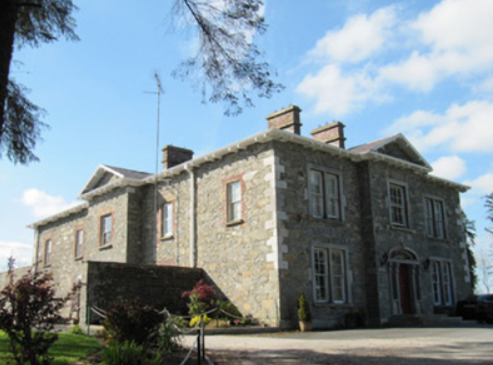
|
| Drumganus | In the mid-19th century, Drumganus House, located on the estate of the Marquess of Bath, was occupied by the Reverend James Duffy and valued at £10. By the early 20th century it was the home of Thomas Williams, farmer, and family. | |
| Drumgoon | The houses known as Drumgoon, Lahard, Gartinadress and Lakeville are in close proximity to one another and all at one time were homes of the Young family. Drumgoon is located just east of Lahard. In the mid-19th century it was the residence of James Robinson, who held it from Robert Hutton when it had a rateable valuation of £6.10.0. This house is still extant. | |
| Drumhallagh House | Henry Bedford was leasing this property from the estate of Sarah Batt at the time of Griffiths Valuation in the 1850s, when it was valued at £18. The property had become derelict in the later twentieth century but has since been restored as a wedding venue. |

|
| Drumharsna | ||
| Drumharsna | At the time of Griffith's Valuation, Lord Ashtown owned the townlands of Drumharsna North and South, barony of Dunkellin. A herd's house in Drumharsna South was valued at £2. By 1906 the buildings at this property were valued at £14. These buildings are no longer extant. | |
| Drumheel House | A house named on the first edition six inch Ordnance Survey map (publ. 1837) with extensive outbuildings and occupied by R. Bell. Griffith’s Valuation records William Smith as owner and occupier in the 1850s, when the buildings were valued at £23.10.0. A building of different shape now occupies this site. | |
| Drumhierny Lodge | At the time of Griffith's Valuation William LaTouche was leasing this property, valued at £15, to Francis LaTouche. Originally built by David La Touche and lived in by successive generations of the family until the early years of the twentieth century. Sold in 1912 and now a ruin. | |
| Drumineney | David Wilson was leasing this property from the Ecclesiastical Commissioners estate at the time of Griffiths Valuation in the 1850s, when it was valued at £16. The National Inventory of Architectural Heritage suggests that the current house at this site was developed c.1870 from an earlier building. Robert Wilson was also leasing property in this townland at the same time. A house and extensive farm exist at the site. | |
| Druminshin Glebe | Rev. James Agar held this property at Druminshin Glebe freehold at the time of Griffith's Valuation when it was valued at £30. The property seems to have been known as Carrigallen Glebe or Carrigallen Lodge at various times though it is recorded as Druminshin Glebe house on the first edition Ordnance Survey map. It is still extant and occupied. |

|
| Drumkeel | At the time of Griffith's Valuation Isabella Palmer was leasing property valued at £10 at Drumkeel, barony of Dromahaire from the estate of the Earl of Tyrconnell. The buildings is extant but derelict. |

|
| Drumkeen | In 1814 ‘Dromkeen’ was the home of Robert Sanderson. Bence Jones writes that this was an early 19th century two storey house. The Ordnance Field Name Book states that it Kilbee resided 'in the old family mansion of Drumkeen house’. It was held in fee, valued at £30 and occupied by Colonel Alexander Saunderson in the mid-19th century. In 1901, it was occupied by Arthur Trench, in 1906 by Lucas Clements when its rateable valuation had risen to £55 and in 1911 by Agnes Jane Clements and her daughter. Bought by the Loreto nuns in 1930, the building has since been altered. |

|
| Drumkilla or Mohill Glebe | At the time of Griffith's Valuation Rev. Arthur Hyde was leasing the Glebe at Drumkilla, valued at £22, from the Ecclesiastical Commissioners. | |
| Drumlease Glebe | Rev. Wilby Wynne was occupying Drumlease Glebe, barony of Dromahaire, at the time of Griffith's Valuation when it was valued at £20. McParlan includes John Carter and brothers of Drumlease on a list of "resident gentlemen of property" in 1802. |

|
| Drumliffen Glebe | At the time of Griffith's Valuation Rev. Wm. Percy was leasing a property valued at £12 at Drumliffen Glebe, barony of Leitrim, from the Ecclesiastical Commissioners. The property is still extant and part of a farm. | |
| Drumlonagher | At the time of Griffith’s Valuation,in the 1850s. this property was leased from the Arran estate by Anthony McLoone, when it was valued at £46. The ruins of the mill are still visible at the site. | |
| Drummaan | Drummaan House is described as "in ruins" on the 1st edition of the Ordnance Survey. The ruins have disappeared by the later 25-inch map of the 1890s. This townland is now located in county Clare. | |
| Drummaconor | A building is marked at this site on the 1st edition 6 inch Ordnance Survey Map (1836) and named on the 25 inch map (surveyed in 1908). In the mid-19th century the house was occupied by John Fawcett who held the property in fee. The buildings were valued at £12. It was at a Halloween ball in this house in 1871 that the dresses of two daughters of Sir William Wilde caught fire causing their deaths a few days later. The ball was hosted by a local bank manager Mr Reid. James Treanor and his family were resident in the early 20th century. He was a farmer and local magistrate. This house is still extant and has functioned as a guest house. For photo circa 1905, see https://madaboutmonaghan.ie/kilmore-and-drumsnatt | |
| Drummartin | At the time of Griffith's Valuation, Drummartin House was being leased by Joseph McCarthy, MD, from Caleb Digby. It was valued at £12. In the 1870s it is recorded as the address of Mrs. Mullarkey. The sale notice of June 1885 indicates that it was a modern house erected at a cost of over £2000 and the main tenant was William Evans. | |
| Drumminroe | Malachy Tuohy held a house valued at £8 from George Henry Moore at the time of Griffith's Valuation. Members of the Tuohy family still occupy this house. | |
| Drummond Cottage | Named on the 1st edition 6 inch Ordnance Survey Map (1836) this house with a farm of 125 acres was the home of the Kelly family in the mid-19th century. Thomas Kelly was resident holding the property from Mary Anne Kelly. Most of the townland belonged to the Porter family. A Mary Anne Jones Kelly of Priorland, Dundalk, owned 200 acres in county Monaghan in 1876. This cottage and its outbuildings date from the early 19th century and still survive. |
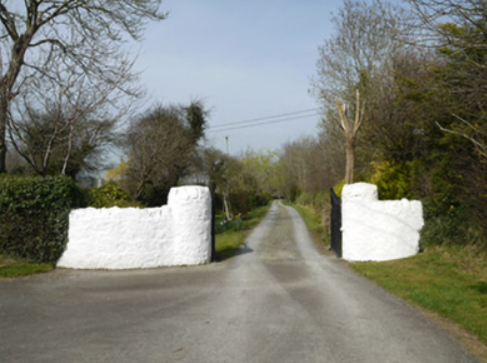
|
| Drummully House | In the mid-19th century a house valued at £10 was owned and occupied by Catherine Dickson in Drumully East. By the early 20th century a substantial house named Drom Mullac is shown on the 25 inch map when the Lough family were resident. There are references to Albert Hutton of Drummully House, Killashandra in 1876; Mrs Louisa Frances Hickson, widow of William Murray Hickson in 1884 and Thomas Lough MP of Drummully in 1898. This house became a convent and was demolished in 2012. | |
| Drumnamallagh | This property is labelled Drumnamallagh on the 25-inch Ordnance Survey map of the early 20th century. A corn mill was located close by on the 1st edition map. This was leased by Edward McFadden from the Hart estate at the time of Griffiths Valuation in the 1850s when it was valued at £14. It is no longer extant. | |
| Drumod More | At the time of Griffith's Valuation, Catherine Warren was leasing a house valued at £9 to Francis Murphy at Drumod More, barony of Mohill. Extensive redevelopment and road building have taken place in this area though there are still buildings at the site. | |
| Drumrahan | Lewis records Drumrahan as a seat of the O'Brien family in 1837. At the time of Griffith's Valuation it was being leased by John O'Brien to Phillip Taggart and was valued at £25. Entrance gates have been reconstructed but the original house is not extant. | |
| Drumreask | Built circa 1840 for Alexander Mitchell, agent to the Shirley estate. This house was the home of the Mitchell family until sold in 1864 to the Kane family. It is named on the 1st edition 6 inch Ordnance Survey map (1836) with an extensive walled garden at the rear. Griffith’s Valuation records the value of the buildings at £25 held by Henry Mitchell in fee. It was still in the ownership of the Kane family in the early 20th century. The house was derelict in the early 21st century. It was purchased by millionaire Gerry McCaughey with a view to turning it into a hotel and equestrian centre (Irish Independent, 25 May 2008) but this does not seem to have come to fruition. |

|
| Drumroe House (Waterford) | In 1851 this property was leased by Sir W.J. Homan from the estate of Mansergh St. George, when it was valued at £45. William Jackson Homan was a member of the Homan family of county Westmeath and married to Lady Charlotte Stuart. Local sources suggest he acted as a steward on the Dromana estate. The house is now a ruin. | |
| Drumroragh Lodge | In 1814, Thomas Goslin was recorded by Leet as the occupant of Dromroa, Mount Nugent. Named on the first edition 6 inch Ordnance Survey map (publ. 1837) Drumroragh Lodge was quite a substantial building. It was the home of Charles Carr Morton and his wife Charlotte Tatlow. The demesne and mansion house of Drumrora were advertised for sale on 21 June 1855 and appears to have been purchased by a relative of the Mortons’ John Tatlow. Griffith’s Valuation in the 1850s describes Drumroragh as a herd’s house with a rateable valuation of £12. It was occupied by John T. Tatlow, who held it in fee. Later maps show a smaller house slightly to the east of the original building, which was demolished. The house is extant but does not appear to be occupied. | |
| Drumrusk House | At the time of Griffith's Valuation, Rev. John Lymberry was leasing this property from Michael Dobbyn when it was valued at £10. Lymbery offered the lands in this townland for sale in 1850 and the petitioner to the sale was Michael Dobbyn, jun. | |
| Drumsheil House | Drumsheil was originally part of the Ashe estate which was sold to the Clements family. It is named on the first edition six inch Ordnance Survey map (publ. 1837) and was situated close to a lough of the same name. The house, with a rateable valuation of £8, was occupied by William Caldwell in the mid-19th century and held from the representatives of Charles Adams. The Caldwell family were still resident in 1911. The site is now a green field. | |
| Drumsillagh | Acheson O'Brien was leasing the property at Drumsillagh, barony of Carrigallen, from the King estate (in chancery) at the time of Griffith's Valuation when it was valued at £15. Lewis also records it as a seat of the O'Brien family in 1837. In 1906 Drumsillagh was owned by the representatives of William A. O'Brien and was also valued at £15. There appears to be still a house at this site. | |
| Duagh Glebe | Sir John Benn-Walsh's estate was leasing this property to Rev. Robert Hickson at the time of Griffith's Valuation, when it was valued at £17. Lewis records it as the seat of Rev.R. Hickson in 1837. |

